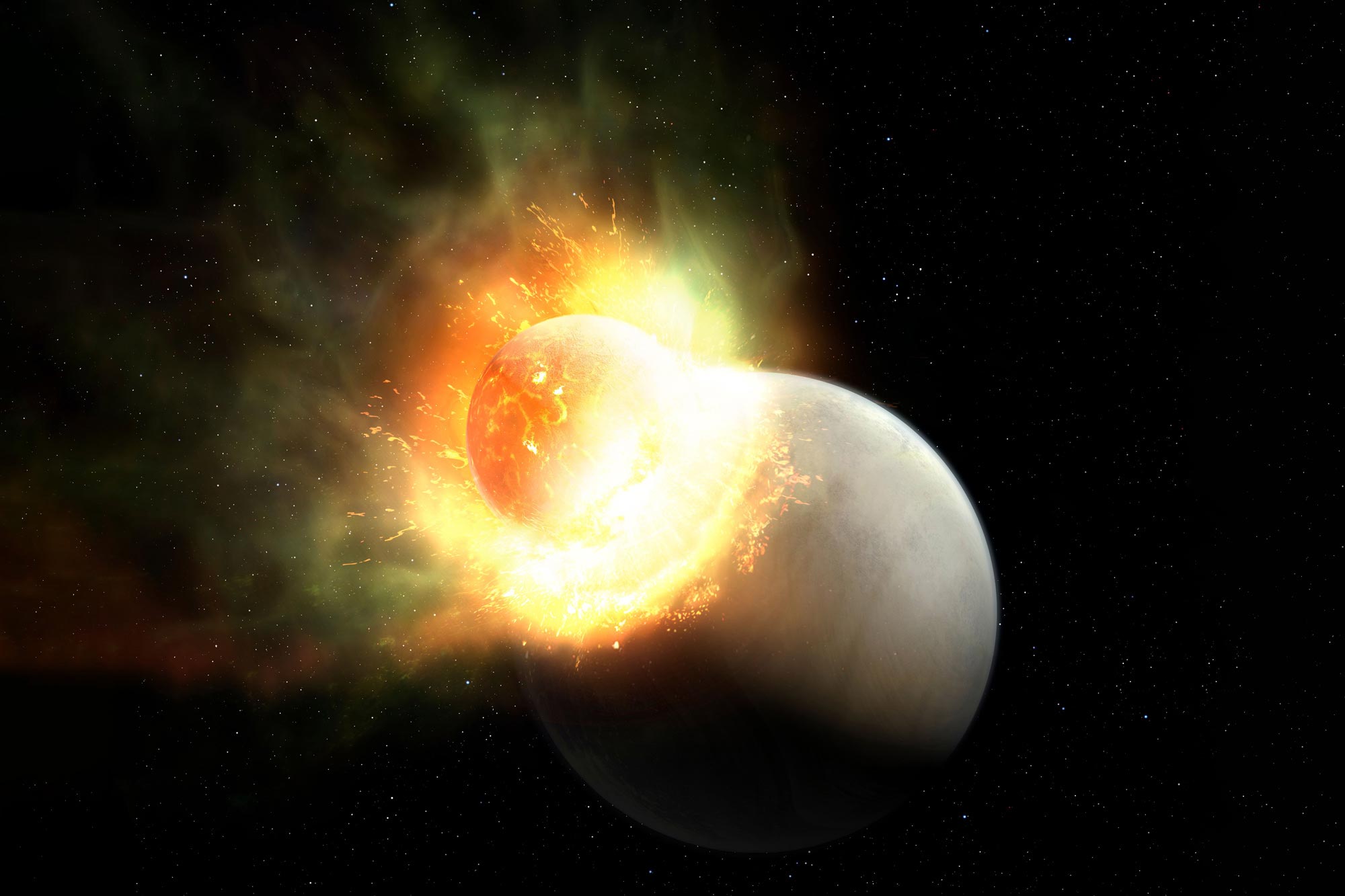
In our own solar system, the Earth and moon are thought to be products of this type of giant impact.
Now astronomers at MIT, the National University of Ireland Galway, Cambridge University, and elsewhere have discovered evidence of a giant impact that occurred in a nearby star system, just 95 light years from Earth.The MIT-led team has observed further evidence of a giant impact around the star.Crucially, they detected gas indicating that such a high-speed impact likely blew away part of the larger planet’s atmosphere — a dramatic event that would explain the observed gas and dust around the star.“Everyone is interested in observing a giant impact because we expect them to be common, but we don’t have evidence in a lot of systems for it.
“When people want to study gas in debris disks, carbon monoxide is typically the brightest, and thus the easiest to find,” Schneiderman says.With a careful reanalysis, the team was able to detect carbon monoxide around the star.They also observed that the gas was circling in large amounts, surprisingly close to the star, at about 10 astronomical units, or 10 times the distance between the Earth and the sun.
“The presence of carbon monoxide this close requires some explanation,” Schneiderman says.That’s because carbon monoxide is typically vulnerable to photodissociation, a process in which a star’s photons break down and destroy the molecule.At close range, there would typically be very little carbon monoxide so close to a star.
“In systems of this age, we expect there to be giant impacts, and we expect giant impacts to be really quite common.
The only plausible process that could produce carbon monoxide in this system in this context is a giant impact.”.
The team estimates that the gas was released from a giant impact that occurred at least 200,000 years ago — recent enough that the star would not have had time to completely destroy the gas.The impact was so great that it likely blew off part of one planet’s atmosphere, in the form of the gas that the team observed today.
“We are showing that, if you find carbon monoxide in a place and morphology consistent with a giant impact, it provides a new avenue for looking for giant impacts and understanding how debris behaves in the aftermath.”.
“It also opens up the possibility to study the composition of the atmospheres of extra solar planets undergoing giant impacts, which ultimately may help shed light on the atmospheric condition of the terrestrial planets during their own giant impact stage.”.
Reference: “Carbon monoxide gas produced by a giant impact in the inner region of a young system” by Tajana Schneiderman, Luca Matrà, Alan P.